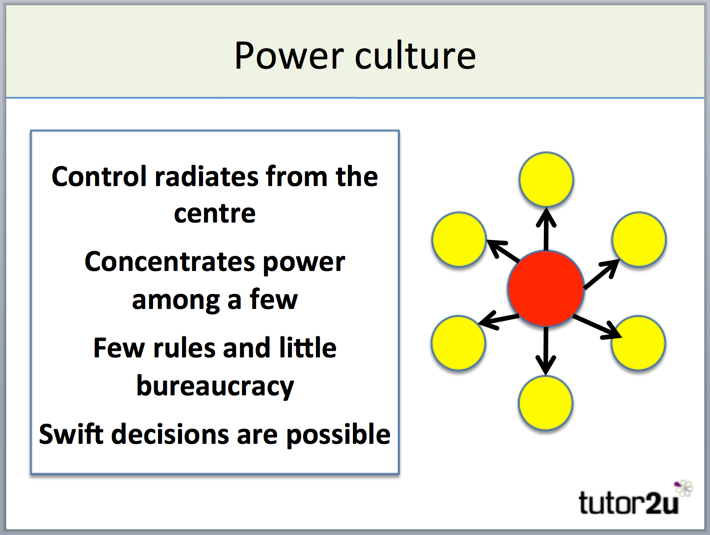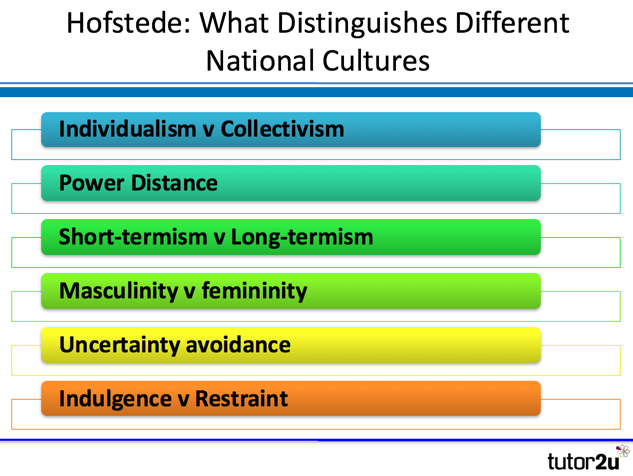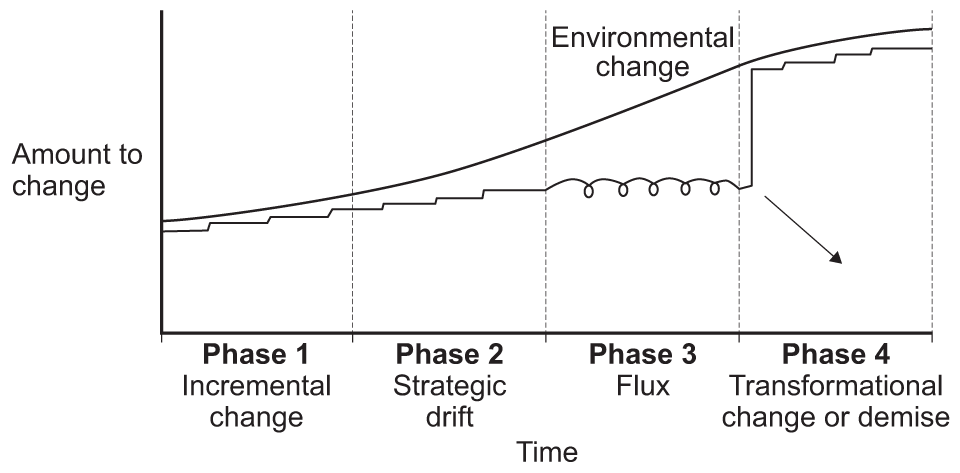Managing Strategic Change
- Created by: Leary103
- Created on: 16-01-21 12:53
Types of Change
Incremental change: small adjustments made, usually over a long period of time, towards the desired end result; it usually does not alter current working practices in any significant way
Disruptive change: an irreversible change to products, processes and markets; a change that later the future completely from what was expected before the change
Lewin's force field analysis

Flexible organisation
Flexible organisation: an organisation that can respond quickly to changes. taking place in the external environment; includes a flexible workforce structure that allows capacity to be increase or reduced quickly and easily in response to external pressures
Issues with flexible organisations:
- restructuring
- delayering
- Flexible employment contracts: working arrangements that give some degree of flexibility about how long, where, when and at what times employees work; the flexibility can be in terms of working times, working location or the pattern of working
Organic vs Mechanic Structures
Organic structures: features include flat, organised structures; horizontal communication and interactions; low levels of specialisation because knowledge reside wherever it is most useful; decentralisation involving a great deal of formal and informal participation in decision making
Mechanic structures: features include hierarchal and bureaucratic organisational structures; highly centralised authority; formalised procedures and practices; highly specialised functions
Knowledge and Information Management (KIM): the practice of organising, storing and sharing vital knowledge and information so that everyone in an organisation can benefit from its use
Kotter and Schlesinger's Four resistances to chang

Kotter and Schlesinger's Four resistances to chang

Organisational Culture
Organisational culture: the unwritten code that affects the attitudes and behaviour of staff, approaches to decision making and the leadership style of management; the shared values of an organisation, including the beliefs and norms that affect every aspect of work life, from how people greet each other to how major policy decisions are made
Handy's cultural model

Handy's cultural model

Handy's cultural model

Handy's cultural model

Handy's cultural model

Hofstede's national cultures

Hofstede's national cultures
Individualism v Collectivism
Some societies value the performance of individuals
For others, it is more important to value the performance of the team
Has important implications for financial rewards at work (e.g. individual bonuses v profit-sharing for bigger groups)
Power Distance
This considers the extent to which inequality is tolerated and whether there is a strong sense of position and status
A high PD score would indicate a national culture that accepts and encourages bureaucracy and a high respect for authority and rank
A lower PD score would suggest a national culture that encourages flatter organisational structures & a greater emphasis on personal responsibility and autonomy
Hofstede's national cultures
Long-term orientation
This category is concerned with the different emphases national cultures have on the time horizons for business planning, objectives & performance
Some countries place greater emphasis on short-term performance (so-called short-termism), with financial and other rewards biased towards a period of just a few months or years.
Other countries take a much longer-term perspective, which is likely to encourage more long-term thinking.
The key implication of this category is the impact on investment decisions and risk-taking
Masculinity v Femininity
This somewhat unfortunately-named category considers the differences in decision-making style
Hofstede linked what he called a “masculine” approach to a hard-edged, fact-based and aggressive style decision-making
By contrast, ”feminine” decision-making involved a much greater degree of consultation and intuitive analysis
Hofstede's national cultures
Uncertainty Avoidance
This category essentially considers the different attitudes to risk-taking between countries
Hofstede looked at the level of anxiety people feel when in uncertain or unknown situations
Low levels of uncertainty avoidance indicate a willingness to accept more risk, work outside the rules and embrace change. This might indicate a more entrepreneurial national culture
Higher levels of uncertainty avoidance would suggest more support for rules, data, clarity of roles and responsibilities etc. These cultures might be less entrepreneurial as a consequence
Indulgence v Restraint
Indulgence stands for a society that allows relatively free gratification of basic and natural human drives related to enjoying life and having fun
Restraint stands for a society that suppresses gratification of needs and regulates it by means of strict social norms
The Cultural Web

Strategic Implementation
Strategic Implementation: the stage when a strategic plan is put into effect in order to achieve the objectives for which it has been designed; the stage where strategies are translated into policies, rules, procedures and operational targets within the different functional areas
External factors and the effective implementation of a strategy:
- Changes in a firm's external environment
- Changes in a firm's competitive environment
Internal factors and the effective implementation of a strategy:
- Leadership
- Organisational structure
- Organisational culture
- Communication
- Timing and distinctiveness
- Providing adequate resources
- Network analysis
- Monitoring and accountability
- Reviewing and evaluating
Network Analysis
Network Analysis: a method of planning business operations in order to identify the most efficient way of completing an integrated task or project. The main form of network analysis is a critical path analysis
Critical Path Analysis (CPA): the process of planning the sequence of activities in a project in order to discover the most efficient and quickest way of completing it
Critical Path: the sequence of activities in a project that must be completed within a designated time in order to prevent any delay in the overall completion of the project

CPA

CPA
Total float for activity: the number of days that an activity can be delayed without delaying the project
Measured by: LFT - EST - duration of the activity
CPA Advantages and Disadvantages
Advantages of CPA
- Most importantly – helps reduce the risk and costs of complex projects
- Encourages careful assessment of the requirements of each activity in a project
- Help spot which activities have some slack ("float") and could therefore transfer some resources = better allocation of resources
- A decision-making tool and a planning tool – all in one!
- Provides managers with a useful overview of a complex project
- Links well with other aspects of business planning, including cash flow forecasting and budgeting
Disadvantages of CPA
- Reliability of CPA largely based on accurate estimates and assumptions made
- CPA does not guarantee the success of a project – that still needs to be managed properly
- Resources may not actually be as flexible as management hope when they come to address the network float
- Too many activities may the network diagram too complicated. Activities might themselves have to be broken down into mini-projects
Planned vs emergent Strategy
Planned strategy: where the main elements of the strategy have been planned in advance and implementation involves putting the precise plan into effect in order to achieve the previously agreed objectives; also known as intended strategy
Emergent strategy: an unplanned strategy that emerges in response to unexpected opportunities and challenges; a response to internal and external changes that were not envisaged at the time of the originally planned strategy
Strategic Drift
Strategic Drift: A situation where a company responds too slowly to changes in its external and competitive environments; a company continues with a strategy that may have served it very well in the past but is no longer suited to the current circumstances
Reasons for strategic drift:
- Changes in the external and competitive environment are greater than the incremental changes being made in an organisation's strategy
- Organisational culture restricts the ability of an organisation to change at a rate that is necessary to cope with external changes or to maintain performance
- Leaders of an organisation continue to persevere with obsolete or largely redundant policies and practises and are not prepared to, or do not see the need to change
- An organisation simply reacts to changes in its external and competitive environment rather than innovating in a proactive way
- The strategic plan is not reviewed regularly to check that it is aligned well with what is happening in the external and competitive environments
- An organisation is not keeping up with, or adapting quickly or appropriately enough to, changes in technology
Strategic Drift

Divorce of ownership and control
Divorce of ownership and control: separation of the two functions of ownership and control in public limited companies; ownership entails providing finance and therefore taking risks; control involves managing the organisation and making decisions

Corporate Governance
Corporate Governance: a set of relationships between a company's management, its board, its shareholders and other stakeholders; a system for protecting the interests of the owners (shareholders) of a company
Strategic planning: the process of determining an organisation's long-term goals and then devising a plan (strategy) to achieve them
Contingency Planning: Planning for the unexpected and, usually, unwelcome events that are, however, reasonable predictable and quantifiable; the objective is to reduce the risks and costs of such events on an organisation
Related discussions on The Student Room
- Good enough for medical school ? »
- Change of masters course »
- Brighton »
- BSc International Strategic Business Management Accreditation ULaw »
- HR Executive »
- Official Imperial Business School Postgraduate 2023 / 2024 »
- A-level Business Paper 1 predictions 2022 »
- Could someone please help with some feedback »
- Could you give me feedback on this please »
- Marketing/global marketing/ Digital Marketing »
Comments
No comments have yet been made